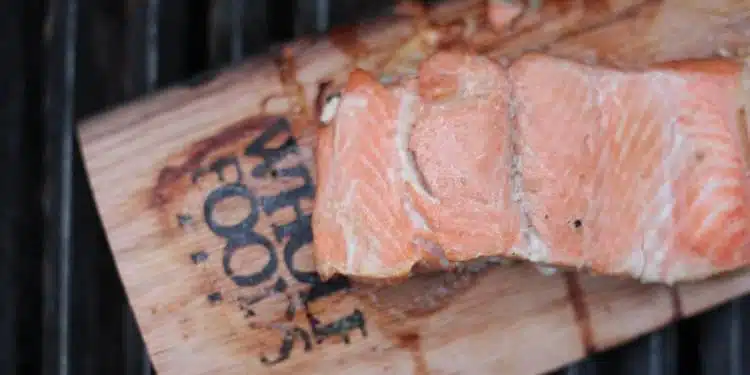by Ellen Blake
Grilled, baked, broiled, roasted or microwaved, it’s all good
My family enjoys salmon for dinner – a lot. We eat it at least once a week. We like it grilled, grilled, baked, roasted, broiled or microwaved. It’s all good. This tasty fish is simple to prepare, healthy, low calorie, and best of all, it’s one of the few foods we all like! If you’re looking for an easy and delicious meal, salmon is the way to go.
So what’s the problem? This is definitely a first-world problem, but I hate that Sometimes when I pull my salmon out of the oven, it has globby white stuff on it. You know what I’m talking about. It’s not pretty and my kids don’t want to eat it when it looks that way.
But what is that white stuff?
That gooey white stuff that appears to explode on my cooked salmon is actually perfectly normal, though it looks nasty. It’s a harmless protein called albumin and entirely safe to eat. Albumin exists naturally in salmon, and isn’t visible when your fish is raw. However, as the salmon cooks, the albumin thickens resulting in the formation of those nasty-looking white globs that seem to ooze out of every layer.
It’s possible to make white stuff-free salmon
Thank goodness. I like my food to look appetizing whether for my family or for guests, which means no white stuff.
One way to eliminate the white stuff is to brine the salmon first in a nice cold bath of salty water. Brining minimizes the albumin released when salmon cooks. However, this process takes time many of us don’t have, often up to an hour. It also adds sodium to the entree, an ingredient individuals with certain medical conditions try to avoid.
Another way that’s almost as effective as brining is to avoid cooking your salmon too quickly and don’t overcook it. My favorite way to achieve a white stuff-free salmon is to roast it in the oven, keeping the temperature low and cooking slowly to a medium doneness of 125°F. Start with a room-temperature fish arranged skin side down for best results.
The bottom line
The white stuff on salmon looks weird, but it’s not unhealthy to eat. If you have time to brine your salmon before cooking, and are inclined to do so, by all means give it a try. Otherwise, roast it slowly for salmon with a flaky, albumin-free crust. However, if you decide to quickly microwave your fish on a busy night in a lemon butter sauce and see more of the albumin than you like after cooking, don’t worry. It won’t hurt you to eat it and it doesn’t even taste bad. If you lose your appetite when you see the white stuff when you sit down to eat, you can always remove it before serving.
Need a great salmon recipe? My favorite is Salmon Primavera from Kosher by Design by Susie Fishbein. It’s my go-to recipe for company. And guess what? No white stuff.
Do you have tips to share about how to make salmon with an albumin-free crust? Or a favorite recipe? Please share – we love to hear from our readers!










